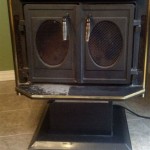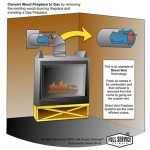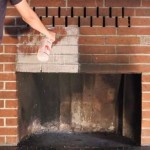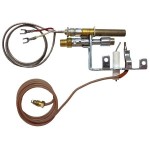Converting A Gas Fireplace Back To Wood Burning
The allure of a crackling wood fire remains enduring for many homeowners. While gas fireplaces offer convenience and ease of use, the ambiance and sensory experience of a traditional wood-burning fireplace are often missed. However, converting a gas fireplace back to wood burning is a complex undertaking that must be approached with careful planning and a thorough understanding of building codes, safety regulations, and fireplace mechanics. This article provides a detailed overview of the factors to consider, the steps involved, and the potential challenges associated with such a conversion.
Before embarking on this project, it is imperative to determine whether the existing fireplace was originally designed and constructed to accommodate wood burning. Many modern homes are built with gas-only fireplaces that lack the necessary structural components and safety features required for safely burning wood. Attempting to burn wood in a fireplace not rated for it can lead to serious hazards, including chimney fires, carbon monoxide poisoning, and structural damage to the home.
A thorough inspection by a qualified fireplace professional is the first crucial step. This professional will assess the fireplace's construction, the condition of the chimney, and the presence of necessary safety features such as a proper firebox, flue liner, and spark arrestor. The professional will also verify compliance with local building codes and regulations, which can vary significantly depending on the location.
If the fireplace was originally designed for wood burning but later converted to gas, the conversion process is generally less complex. However, even in these cases, a thorough inspection and necessary repairs are essential to ensure the fireplace is safe and functional for wood burning.
Key Considerations Before Converting
Several critical factors must be carefully considered before proceeding with the conversion. These factors directly impact the safety, legality, and feasibility of the project.
Chimney Condition and Type: The chimney is a critical component of a wood-burning fireplace, responsible for safely venting smoke and combustion gases outside the home. A damaged or improperly constructed chimney poses a significant fire hazard. It is crucial to inspect the chimney for cracks, leaks, and obstructions. The type of chimney liner is also important. Clay tile liners, common in older homes, can degrade over time and may need to be replaced with a more durable stainless steel liner. A masonry chimney in disrepair can allow heat and combustible gases to escape into the structure of the house. A qualified chimney sweep can perform a thorough inspection and recommend necessary repairs or replacements.
Firebox Integrity: The firebox is the area where the wood is burned. It must be constructed of non-combustible materials such as firebrick or concrete to withstand the intense heat. Inspect the firebox for cracks, crumbling mortar, or other signs of damage. Any damage must be repaired before burning wood to prevent heat from transferring to combustible materials in the surrounding walls. Firebrick often needs to be re-mortared and even individual brick replaced when converting back to wood burning.
Local Building Codes and Permits: Building codes and regulations governing wood-burning fireplaces vary widely by location. It is essential to research local requirements and obtain any necessary permits before starting the conversion process. Failure to comply with building codes can result in fines, legal action, and potential safety hazards. These codes often address issues such as chimney height, spark arrestor requirements, and clearances to combustible materials. The municipal building inspector can be a valuable resource for understanding local regulations.
Operating Requirements: Burning wood in a fireplace requires a knowledge of safe practices, including wood selection, fire management and storage. Certain types of wood burn cleaner and more efficiently than others. Seasoned wood is critical. Green or wet wood creates excessive smoke and creosote buildup, increasing the risk of chimney fires. It is also important to have the proper tools for tending the fire, such as a poker, shovel, and tongs. Regular chimney cleaning is essential to prevent creosote buildup and maintain safe operation.
The Conversion Process: Step-by-Step
Once it has been determined that the fireplace is suitable for conversion and all necessary permits have been obtained, the conversion process can begin. The specific steps involved will vary depending on the existing fireplace configuration and the extent of any required repairs.
Removal of Gas Components: The first step is to disconnect and remove all gas components, including the gas logs, burner, and gas line. This should be done by a licensed gas fitter or plumber to ensure that the gas supply is safely shut off and capped. Failure to properly disconnect the gas line can result in a dangerous gas leak. The gas supply pipe will need to be securely capped to prevent any future leaks.
Fireplace Cleaning and Inspection: After removing the gas components, thoroughly clean the fireplace to remove any soot, dust, or debris. This will allow for a more accurate inspection of the firebox and chimney. Pay close attention to the condition of the firebrick and mortar, and make any necessary repairs. Addressing minor issues early can prevent more significant problems later.
Chimney Inspection and Cleaning: The chimney should be inspected and cleaned by a certified chimney sweep. The sweep will remove any creosote buildup and identify any structural issues that need to be addressed. A video inspection of the chimney flue can be particularly helpful in identifying hidden cracks or damage. The chimney sweep can also advise on the proper type of wood to burn and safe burning practices.
Installation of Wood-Burning Accessories: Depending on the existing fireplace configuration, it may be necessary to install additional wood-burning accessories, such as a grate, screen, and ash container. A grate elevates the wood off the firebox floor, allowing for better air circulation and more efficient burning. A screen prevents sparks and embers from escaping the fireplace, reducing the risk of fire. An ash container provides a safe and convenient way to dispose of ashes.
Damper Inspection and Repair: The damper is a crucial component that controls the airflow in the chimney. Inspect the damper to ensure it is functioning properly and seals tightly when closed. A malfunctioning damper can allow heat to escape up the chimney when the fireplace is not in use, increasing energy costs. It can also allow cold air to enter the home, making it uncomfortable. A rusted or damaged damper should be repaired or replaced.
Potential Challenges and Considerations
Converting a gas fireplace back to wood burning can present several challenges that homeowners should be aware of before undertaking the project.
Cost: The conversion process can be expensive, especially if significant repairs or replacements are required. Costs can include chimney cleaning and inspection, firebox repairs, flue liner replacement, and installation of wood-burning accessories. Unexpected problems can arise during the conversion process, adding to the overall cost. It is wise to obtain multiple quotes from qualified professionals before proceeding.
Safety Concerns: Burning wood in a fireplace carries inherent safety risks, including chimney fires, carbon monoxide poisoning, and smoke inhalation. It is essential to follow safe burning practices and maintain the fireplace and chimney regularly to minimize these risks. Installing a carbon monoxide detector is crucial. Familiarize yourself with the signs of carbon monoxide poisoning and seek medical attention immediately if symptoms occur.
Environmental Impact: Wood-burning fireplaces can contribute to air pollution, especially if improperly operated or if unseasoned wood is burned. Consider the environmental impact of burning wood and take steps to minimize emissions. Using seasoned wood, burning efficiently, and avoiding excessive smoke can help reduce air pollution. Some municipalities may have restrictions on wood-burning during certain times of the year to improve air quality.
Maintenance Requirements: Wood-burning fireplaces require regular maintenance, including chimney cleaning, ash removal, and firebox inspection. Failure to properly maintain the fireplace can increase the risk of chimney fires and other hazards. Schedule regular chimney cleanings with a certified chimney sweep.
Alternative Solutions: Instead of converting back to wood-burning, explore alternatives like high-efficiency gas inserts. These inserts offer the convenience of gas with improved heating efficiency and more realistic flame patterns. Electric fireplaces are another option, offering ease of installation and operation with no venting required. These alternatives may be a more cost-effective and environmentally friendly solution.
In conclusion, converting a gas fireplace back to wood burning is a significant undertaking that requires careful planning, professional expertise, and a commitment to safe operating practices. The decision should not be taken lightly, and all factors outlined above must be carefully considered.

Want To Convert Gas Wood Fireplace Full Service Chimney

Want To Convert Gas Wood Fireplace Full Service Chimney

Want To Convert Gas Wood Fireplace Full Service Chimney
Convert To A Beautiful Wood Burning Fireplace
Convert To A Beautiful Wood Burning Fireplace

Want To Convert Gas Wood Fireplace Full Service Chimney

How To Convert A Gas Fireplace Wood

Convert Gas Fireplace To Wood

How To Modernize And Update A Gas Fireplace We Love Fire
Can I Convert My Wood Burning Fireplace To Gas Woodlanddirect Com
Related Posts








